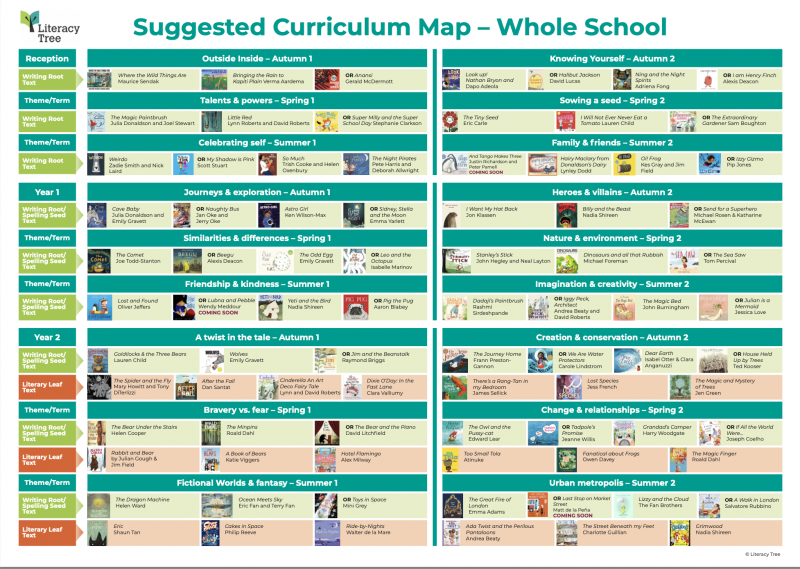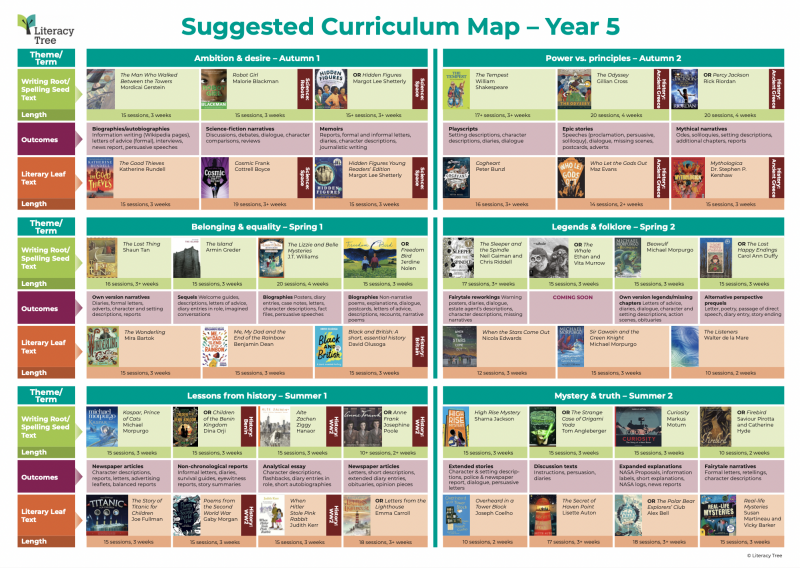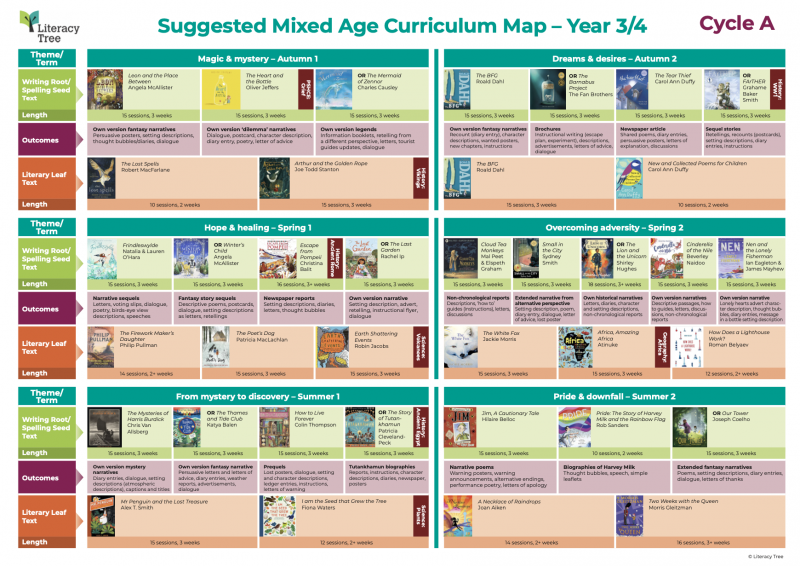Written byLynn Sear
Co-CEO & Co-Founder
See More
In the first of our How to Use series we look at the curriculum maps.
This simple guide looks at how to interpret curriculum maps to meet the needs of your own setting. Schools and individual teachers may want to follow the curriculum maps robustly to ensure they have complete coverage of the National Curriculum, however everything in this guide is a recommendation, and schools and individual teachers are welcome to use Literacy Tree as a general resource and adapt according to need.
Rationale
Our curriculum maps are suggested overviews and routes for our resources and texts. We have created these and suggested the order taking several factors into account:
- Progression of text. This may be the level of sophistication or level of density of text. We have been mindful to place certain texts that present challenge later in the year.
- Seasonal, cultural and historical links. We have deliberately placed books that may have stronger seasonal or cultural links or link to specific historical memorial days/weeks/months.
- National Curriculum Objectives. We have identified where certain objectives need to be covered in the year and we have also looked at which objectives work well to support children with a particular writing outcome that might suit a certain text.
- Literary Themes. We have grouped texts together using literary themes to support them making deeper and more meaningful links.

How many books should be chosen?
- Each class from Y2 onwards has the opportunity to have a book for writing (Writing Root) and a book for teaching reading comprehension (Literary Leaf) on the go at the same time.
- There is an element of choice each term. We recommend a school with an hour for writing each day and 30 minutes for reading each day can fit two Writing Roots and two Literary Leaves in each half-term. This will need adjusting if you have less time timetabled for the teaching of Writing or Reading.
- We have chosen a range of books that might sit within a half-term, but we would strongly recommend that where a picture book is being used for a Writing Root then a novel or a poetry anthology or a non-fiction book is used alongside for the Literary Leaf to vary the type of reading and density of text. In an average school this means that four books are covered in a half-term, two for writing and two for reading.

Can we change the order of the Writing Roots and still have coverage?
Yes. Our coverage documents show you where objectives sit within each Writing Root. We repeat the end of year objectives within a year group several times to ensure learning is embedded and deeply contextualised, though we are aware that children may not achieve these completely first of all in the autumn term. Our RATE tool (Recording and Assessment Tool for English) can help with identifying this and tracking the progress. The Literacy Tree App simplifies RATE for ease of use and allows members to tag work to assessment statements within RATE.

Mixed Age
We have created mixed-age curriculum maps to support smaller schools and schools with more than one year group in a class. These are organised in cycles and have texts from across the years to ensure coverage over two or three academic years. They follow the same principle with the progression of texts across a year, but we have ensured there is no repetition across the two or three years. Within each half term there will be at least one book from each of the year groups within the mixed-age class.
Posted in: Curriculum | How to use


